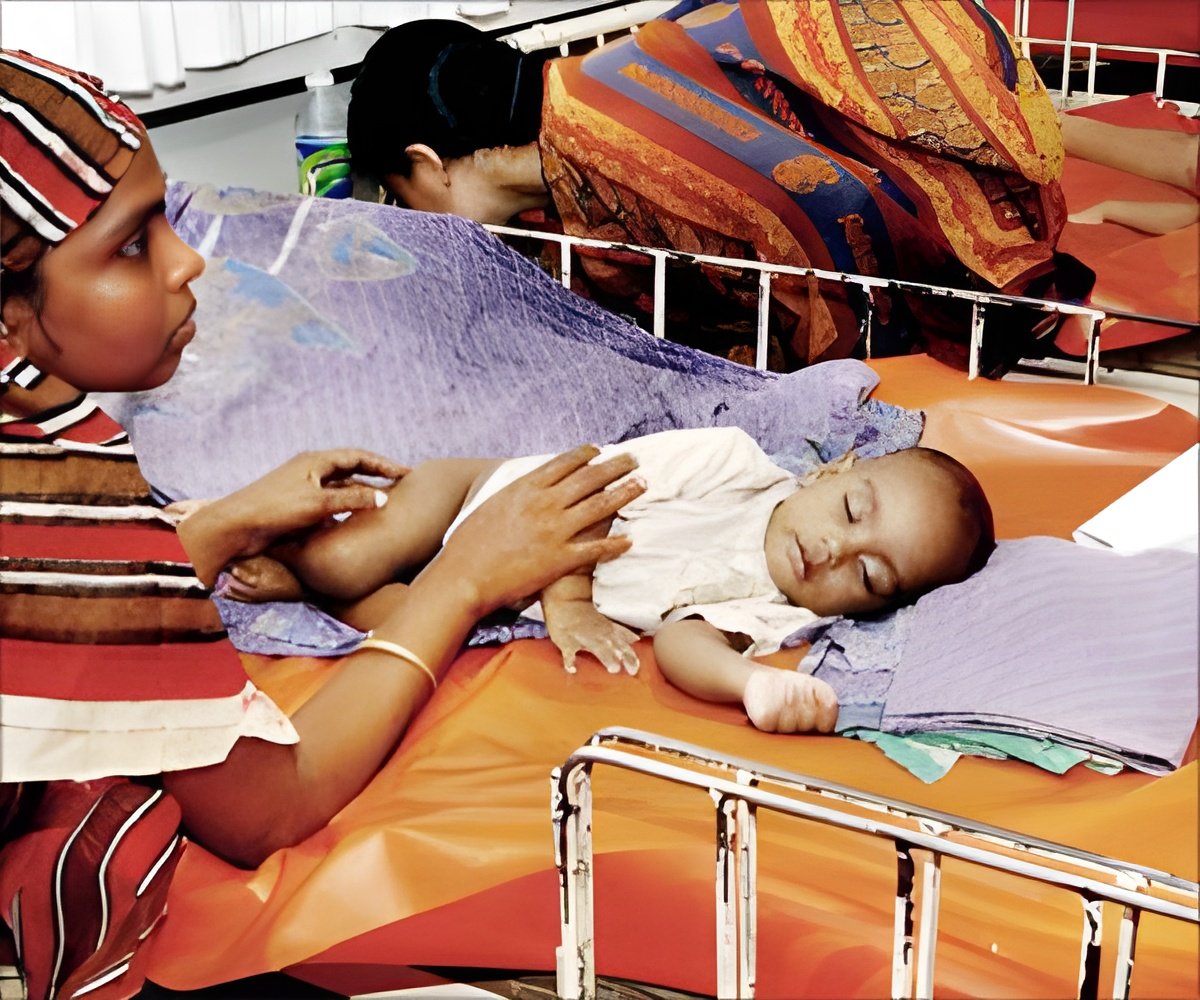New studies reveal specific interventions like early immunizations and skilled birth attendance that have led to success with at risk populations like women and children in poorest countries.

The remaining 50 percent is due to factors outside the health sector, such as girls' education, women's participation in politics and the workforce, reduction of fertility rates, access to clean water and sanitation, economic development and political commitment, which underpin progress, according to a new series of studies, Success Factors For Women's and Children's Health.
The series' findings have been published in scientific journals including The Lancet Global Health and the Bulletin of the World Health Organization.
The series was coordinated by The Partnership for Maternal, Newborn & Child Health to answer the question of why some countries achieved faster reductions of maternal and child mortality compared to other low- and middle-income countries. Collaborators of the studies were the World Health Organization, the World Bank Group and the Alliance for Health Policy and Systems Research, Johns Hopkins Bloomberg School of Public Health and the London School of Hygiene & Tropical Medicine. The main collaborators worked closely with governments and development partners.
Countries charting their own destiny
According to the new research, ten low- and middle-income countries - Bangladesh, Cambodia, China, Egypt, Ethiopia, Lao PDR, Nepal, Peru, Rwanda and Viet Nam - have been highly successful in reducing maternal and child mortality, and in making good progress on sexual and reproductive health. The studies call these 10 nations "fast-track" countries. "Successful countries made rapid progress by deploying strategies tailored to their own contexts, strengths and challenges," says Carole Presern, a midwife and a PhD, Executive Director of the Partnership for Maternal, Newborn & Child Health (PMNCH).
"Fast-track countries used a 'triple planning approach' -- to address immediate needs, work towards a long-term vision, and adapt quickly to change. They used robust evidence to make smart investments and mobilize national and international resources to achieve their objectives. These countries are charting their own destiny."
Other countries are making significant progress too, but not yet across the board. Some countries such as Niger have achieved high rates of reduction in child mortality. Eritrea has accelerated reduction of maternal mortality. India and Nigeria have seen excellent progress in some states, but more progress is required in other areas.
What surprised researchers was that around half the reduction in under-five child mortality is attributable to progress across different sectors in low- and middle-income countries since 1990.
Beyond high-impact health sector interventions such as immunizations and skilled birth attendance, other factors contributed less than 15 percent each. GDP growth contributed around 12 percent.
While economic development was a foundation for advancement, it was not sufficient without advancement across a core set of health and multi-sector factors. Good governance - including control of corruption - underpinned progress.
"Fast-track countries mobilized partnerships across the board, accelerating progress for women's and children's health," says Dr. Presern. "I worked in one of these countries, Nepal, for nine years. Considering where Nepal was in 1986, to now, it is nothing short of spectacular."
Political will and social commitment make a real difference, according to Tedros Adhanom Ghebreyesus, the Minister of Foreign Affairs of Ethiopia. "The old saying that 'where there is a will there is a way' holds true. Country leaders do not have to face their challenges alone, other countries have faced similar challenges. Sharing the best practices can support our collective global progress, so let's learn from each other," says Minister Ghebreyesus.
"These studies revealed that improving people's health and strengthening health systems required investing in health-enhancing sectors such as education, water and sanitation, social protection, and infrastructure development," explains Tim Evans, M.D., Senior Director of Health, Nutrition and Population at the World Bank Group. "Smart, focused, multi-sectoral interventions are critical to securing the essential foundations for the health of women and children."
"For the first time we can affirm with certainty that greater improvements in women's and children's health are the result of investments not only in the health sector, but across other sectors too," says Flavia Bustreo, M.D., Assistant Director General at the World Health Organization.
"The findings of the Success Factors studies are an important addition to the findings and recommendations of the Global Investment Framework for Women's and Children's Health launched in November last year, which reported that with the right investments towards women's and children's health, benefits of up to nine times the value can be generated in social and economic terms."
Barriers to investment and collaboration across sectors are formidable as most governments, donor agencies and international organizations are organized by sector.
"It is like having a wheel with the central government at the hub and line ministries or departments as the spokes, but with no rim connecting them," says Julian Schweitzer, PhD, Principal at Results for Development.
"Government departments and development partners need to transform how they collaborate so that they can accelerate progress together. This does not mean that everyone has to work together all the time. Rather, there are opportunities for strategic planning and coordination that could enhance the resources and results across sectors."
"Multisectoral progress in countries can be coincidental or coordinated. I have seen first-hand the importance of a strategic, coordinated approach across sectors in India's polio eradication efforts," says Anuradha Gupta, Deputy Chief Executive Officer of the GAVI Alliance.
"India was declared polio-free in March 2014. One of the last barriers we had to cross was in underserved areas where children were administered several doses of polio vaccine and yet polio outbreaks continued. Data showed that frequent diarrheal diseases were preventing children from retaining the polio vaccine in their gut. The health department then worked closely with the water and sanitation departments, and together with other development partners and communities we were able to cross this barrier to polio eradication."
Progress across a set of core factors and sectors
The detailed evidence shows there is "no standard formula" for improved results, but progress across a set of core factors and sectors made the most difference. Conversely, countries that failed to make sufficient overall progress, while often making progress on a few factors, generally did not keep pace on the full set.
"There are powerful synergies across different sectors to improve the health of women, children and their families," explains Minister Tedros Adhanom Ghebreyesus. "The best health facility is only as good as the road that leads to it. The best method of family planning is girls' education. The best way to improve a family's nutrition is to invest in agriculture. Government budgets for different sectors should not be seen as a competition, but as a joint contribution to people improving their quality of life."
Most fast-track countries improved health outcomes, despite low GDP per capita, relatively low levels of investment, and significant political and economic challenges.
These countries have achieved more than 90 percent immunization coverage for children under 5.
In Cambodia, multi-stakeholder partnerships were used to promote maternal and child health through mass-media campaigns, using TV, radio, and a TV "soap opera" to promote exclusive breastfeeding. The result: national exclusive breastfeeding rates increased from 11 percent in 2000 to 74 percent in 2010.
"In Nepal, strong community partnerships with our amazing workforce of female community health volunteers are at the heart of our successes in improving women's and children's health," says Praveen Mishra, Secretary of Health. "Since 1995, these dedicated women have visited every home in every community twice a year to give doses of Vitamin A to breastfeeding women and children up to age five."
"They have branched out to provide immunizations, family planning materials, and information on sanitation, nutrition and infant care. We now have 49,000 volunteers in our program and we reach 94 percent of all children six months to five years old. At least 12,000 lives have been saved."
In Peru, 86 percent of newborns are born in hospitals or birthing clinics. Under the Casa Materna, pregnant women in remote areas await birth in dedicated maternity centers. These rural women are also offered more culturally sensitive birthing options. This context-specific strategy contributed to the 50 percent reduction in maternal mortality in rural areas.
Health services are being strengthened. In China, some 30,000 grass-roots health workers have been trained as general physicians.
China, Bangladesh, Cambodia and Viet Nam, all fast-track countries, have developed industries that employ large numbers of women, many of whom migrate from rural areas. With increased income, these female workers can improve their own and their children's health.
The study found that when women held high political office, mothers, newborns and children received improved care. In Lao PDR, the proportion of women members in the national legislature tripled between 1990 and 2003. Now the Lao PDR Government explicitly recognizes the importance of gender parity and the rights of women, via the Law on the Development and Protection for Women. One result of this is the decrease in the total fertility rate from 6 in 1990 to 3 in 2012.
In Rwanda, another fast-track country, 64 percent of the parliamentarians are women, the highest percentage in the world.
Several factors outside the health sector support the fast-track countries' progress, with different political philosophies and models of economic and social development being developed and tested.
"We are now in the midst of a worldwide experiment with different political approaches and models of development being tested by different countries," says Professor Nicholas Mays from the London School of Hygiene & Tropical Medicine who advised on the methods for the research.
"Continuing to learn which approaches work in what circumstances and why will help support our global endeavor to facilitate people living healthy and fulfilled lives in whichever country they are."
Another way to analyze why the 10 fast-track countries have accelerated progress is to compare the list of interventions to 65 other low- and middle-income countries, including the 49 lowest-income countries. Together these 75 countries account for 95 percent of maternal and child deaths worldwide, according to the Countdown to 2015 initiative.
Source-Eurekalert
 MEDINDIA
MEDINDIA




 Email
Email





